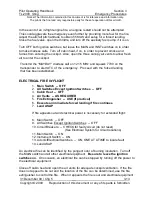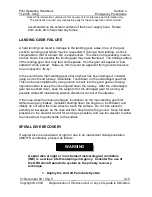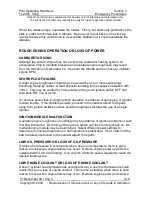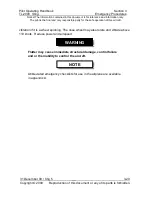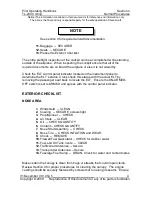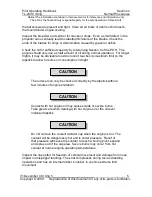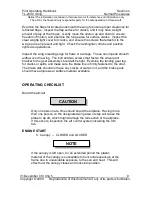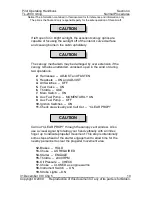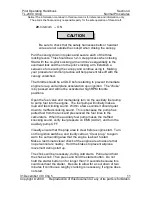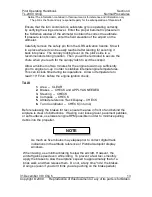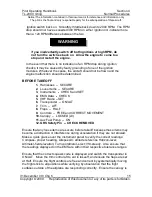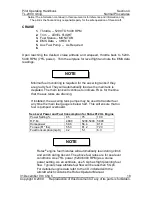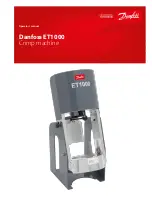
Pilot Operating Handbook
Section 4
TL-2000
Sting
Normal Procedures
Notice! The information contained in this document is for reference and information only.
The pilot is the final and only responsible party for the safe operation of this aircraft.
31 December 09 / Chg 5_____________________________________________6
Copyright © 2009 Reproduction of this document or any of its parts is forbidden.
Check the nose strut suspension system for evidence of nose
wheel impact which can occur on high speed landings where initial
runway contact is not on main landing gear.
Do not use the nose wheel pant to move the nose wheel left and
right. The wheel pant is not designed to have large torsional loads
placed on the front and aft in an attempt to point the nose wheel in
either direction.
Comply with proper environmental fuel disposal regulations and do
not dump fuel onto the ground. When draining the fuel sump,
always use a clean clear fuel sampler. Pour clean fuel back into
the fuel tank.
The fuel sump located underneath the fuselage should be drained to ensure the
correct fuel is onboard and no water or debris has accumulated inside the fuel
tank. Water inside the fuel lines can come out of suspension by vibration or
freeze thus interfering with fuel flow to the engine.
RIGHT WING
1.
Main Fuel Tank -- CHECK QUANTITY / CORRECT FUEL TYPE
2.
Main Fuel Cap -- SECURE
3.
ELT – Check armed and secure
4.
Gear Leg and Brake Line -- CHECK
5.
Ground Wire – CHECK CONDITION AND GROUND CONTACT
6.
Wheel Pant and Bracket -- SECURE
7.
Brake Pads and Disk -- CHECK FOR WEAR
8.
Tire -- CHECK INFLATION and WEAR
9.
Chock -- REMOVE
10.
Wing Leading Edge -- CHECK
11.
Wing Aux Tank (if installed) – CHECK QUANTITIY / FUEL TYPE
12.
Wing Aux Tank Cap – SECURE
CAUTION
NOTE
NOTE


